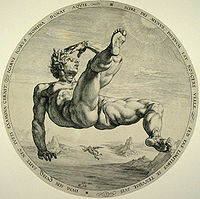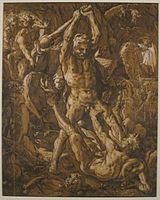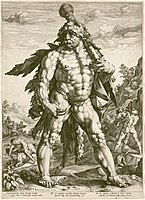Hendrick Goltzius
Hendrick Goltzius, or Hendrik, (German: [ˈgɔltsi̯ʊs]; Dutch: [ˈɣɔltsʲiœs]; January or February 1558 – 1 January 1617) was a German-born Dutch printmaker, draftsman, and painter. He was the leading Dutch engraver of the early Baroque period, or Northern Mannerism, lauded for his sophisticated technique, technical mastership and "exuberance" of his compositions. According to A. Hyatt Mayor, Goltzius "was the last professional engraver who drew with the authority of a good painter and the last who invented many pictures for others to copy".[1] In the middle of his life he also began to produce paintings.
This article is about the painter and engraver. For more uses, see Goltzius (disambiguation).
Hendrick Goltzius
1 January 1617 (aged 58–59)
Most major print rooms will have a group of Goltzius's many engravings.










